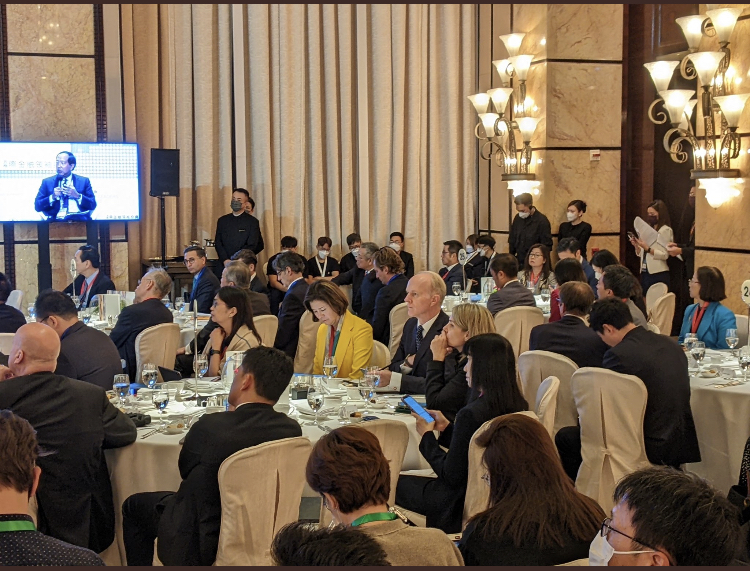According to the great inventor, Thomas Edison, genius is 1 percent inspiration and 99 percent perspiration. When it comes to generating breakthrough ideas from mundane meetings, the same ratio appears to apply.
Too often, meetings fail to rise above the routine, with participants bored and demotivated, trying to squeeze out a solution from a familiar and comfortable way of thinking.
But getting the most out of your meetings – and that means getting the most out of your staff – can be aided by some simple steps to break the mental monotony and provide a different perspective on both workplace and industry problems.
Terms such as “creative thinking”, “thinking outside the box”, “critical thinking” are tossed around offices far too often without the principles behind them to come up with interesting and innovative ideas or even the platform to offer thoughts that don’t follow the precepts of commonly accepted logic.
Mark Fox, who spent 15 years as an engineer with NASA, now owns and runs Sly As a Fox, dedicated to teaching employees of companies big and small the tools to generate creative ideas on a daily basis in the context of their work. He explains that in organisations as large as the US Army right down to 10-person start-ups, the attitude of the most senior executives can often be a roadblock discouraging employees from tapping into the more creative parts of their brain.
“Leave your titles at the door,” he advises. “Whether you are a VP or a general in the army, in these types of sessions, no one person has any more power than anyone else in the room. The senior person needs to realise that he or she is the one most likely to hinder creativity due to their seniority. And when I do seminars with clients as big as Halliburton, that’s what I say, and I ask them: ‘Does everyone agree, no titles?’”
During seminars or breakout sessions, Fox says there is a noticeable shift in the dynamics of the session when senior-level people react in a way that creates a judgment on ideas. The attitude of one and all going into the session is the most significant driver of a successful meeting or brainstorming session.
Embrace ideas
Dr Amantha Imber, founder of Australia-based Inventium, takes learning from science and academia and applies them to practical, real situations, giving seminars to companies around the world about how to generate creative ideas and solutions to problems. She says that in many companies “risk-taking is frowned upon, which naturally leads to a downturn in creativity”. She explains: “Not every idea will work, so it’s important to embrace a culture that supports experimentation and sees it as part of the overall success of the company.”
Fox also says: “If a senior person sponsors the shift in mentality and says, ‘I want 100 new ideas on how to do this because I’m behind this; and in fact, the craziest idea wins’, then people get really into it.”
This often becomes a difficult task when ideas translate into earmarking company money to bring the vision into reality. While many companies are hesitant – especially in difficult economic times – to spend on unproven ideas, Dr Imber likens this to the way that investors look at their stock portfolios. “When you are looking at a portfolio of innovations, it’s like a balanced share portfolio,” she says. “You have to diversify your investments, accept that and feel comfortable with the decisions you make.”
Often accepting alternative ideas and the risk associated means acting from a corporate perspective outside of conventional wisdom.
Fox says: “You need to go in with the mindset that conventional wisdom is wrong 100 percent of the time. Said another way, conventional wisdom at its best is still incomplete.”
Fox believes the idea that conventional wisdom is always right and further, that it is the only logical and appropriate way to conduct business is the number one inhibitor of creative thinking in the workplace.
If the linear and old-fashioned way of thinking in the corporate context is flawed where creative and innovative thinking and idea generation are concerned, then what can companies do to address these issues? The first key is that encouraging creativity and embracing off-the-wall ideas does not necessarily mean installing a playground in the workplace and flying employees to a retreat in a far-off land. It can be as simple as taking two minutes at the beginning of a meeting to energise the creative thinking parts of the brain.
Outside the box
Dr Imber explains: “I often start my seminars with a creative thinking warm-up tool we call ‘Fat Chance’, which gives people an impossible problem to solve in a tight timeframe; for instance, cure cancer by tomorrow lunchtime. There is obviously no ‘logical’ answer to this problem and people’s brains shift themselves into a creative thinking gear.
“It only takes two minutes to warm up the creative thinking part of the brain, so if we ask people to generate five solutions in two minutes, they not only get to know each other, but they get that part of the brain warmed up.” She warns against traditional ice-breakers like telling people about yourself and having the other person introduce you, saying it is an immediate turn-off and can short-circuit creative thinking for the rest of the session.
Fox’s new book Da Vinci and the 40 Answers is based on a story of Soviet scientists in the 1950s, who in looking for new methodology on creativity, received a grant from the navy to look at 300,000 patents. Of those, they found that there were really only 1,500 problems being dealt with and they could all be solved with 40 different solutions. Fox encourages companies and individuals to look at problems not for their individual attributes, but through specific “lenses” that have been proven over time to generate new ideas. He also says the notion that “policy doesn’t allow that” should not be an excuse. In his experience, the policy is often outdated or misinterpreted.
Coming at idea generation from another angle, Dr Imber explains: “What we do is give people easy-to-use and practical tools they can use in the office that are based on what we know is scientifically proven to increase creative thinking ability. We want to talk about how to generate great ideas more effectively, how to make better decisions about these ideas, how to influence people in an effective way, and the psychological biases that humans have.”
These tools even without leadership support, she says, are simple enough that individual teams can use them to approach discussions and solve problems.
Create an environment
Scientific research on human response and behaviour and the experts in the field agree that there is a significant link between physical surroundings and creativity, or lack thereof. Having been through hundreds of offices, Dr Imber says: “in a majority of cases, they are working in stock standard, white-walled cubicles. At that point, one of the first things we talk about are simple changes that can be made to provoke creativity. Warm colours like orange and yellow have been proven to make people feel happier, increasing the amount of dopamine in the brain, which is responsible for information flowing more freely,” she explains. This leads to greater creativity.
Nature scenes – be it a view or a poster – are also helpful in creating the right mood. Dr Imber says that, while it might seem counter-intuitive, “distractions promote creativity. That could mean exposed piping or different pictures on the wall, but it’s very important.” Her team brings second-hand toys and brain-teaser puzzles for people to play with during her seminars to tap into the part of the brain that is not as regularly used.
Another tool recommended by Fox is infusing an event or seminar with people that have nothing to do with the company or business. “One-third of the audience should be people who know nothing about what you do,” he says. The additional perspectives will force people to think outside of their comfort zone. And, this doesn’t mean hiring people for the day.
“Look outside the window to the company across the street. Invite some of their employees to your session to bring fresh minds into your group. Offer to do the same for that company at a later date. They may not be familiar with the details of your industry, but there’s no company which can’t relate to budget issues, or a difficult client. New people change the ambiance entirely,” says Fox.
Above all, Fox and Dr Imber place emphasis on having an open mind. With all parties engaged and interested in learning and applying tools to come up with new ideas and approaches to problems, events, seminars and everyday tasks in the office can be tackled with creativity and innovation, a key to the future of any organisation.
FROM AVERAGE TO EXTRAORDINARY
Dr Amantha Imber of Inventium gives her top tips on how to make a so-so meeting space become the birthplace of great ideas.
• The average conference room is a creativity killer, but if you can find rooms with interesting fixtures, distractions or artwork, that promotes creativity. Look for interesting images to put on the wall, or toys and puzzles sold in toy stores to liven up the room.
• Warm colours like orange and yellow make people feel happier and lead to a more interesting combination of thoughts. Try placing warm-coloured tablecloths on meeting tables.
• Choosing an outdoor venue, or placing plants or a poster of the natural world in a meeting space will make people more relaxed and calm, as well as energise their minds.
• Select a keynote speaker that has nothing to do with the area of expertise of the audience. Bring in a filmmaker at a conference for sales people, that way there is exposure to a diverse range of stimuli.
• Make sure breakout topics and speakers provide the group or audience with practical skills they can take back to the office, giving people techniques they can apply.


